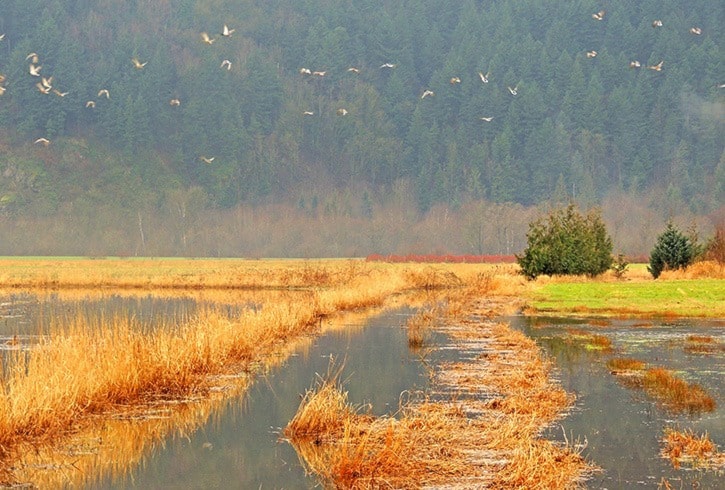The new flood box in the District of Kent "isn't of any significant help whatsoever," if the water in the sloughs can't get there, according to a local landowner Like many farmers in the western reaches of Agassiz, Ted Westlin was dealing with a flooded field earlier this week. And while flooding has become commonplace in recent years due to changes in ditch maintenance schedules, this time it was worse, he said. "There is considerable high water here, and very little at the pump station," he said Monday. Westlin and a number of other Agassiz farmers have been working with District staff throughout the week to pinpoint why the water levels are higher than usual. Mick Thiessen, operations and engineering services manager, said the problem is a lack of conveyance along the sloughs in the catchment area, and that the District staff are investigating several possibilities. Thiessen toured the area on Tuesday morning with local farmers, a group of others included Coun. Duane Post, who also lives in the affected area. "As a couple of dairy farmers," Post said, "we can't figure out why there's so much water." The tour along the sloughs did help staff come to some conclusions. "We suspect there is something affecting the flow somewhat," Thiessen said following the tour. "We noticed the water seems a little higher than usual. Not more stagnant, just a bit higher." He suggested that there may be a beaver dam or debris in the downstream end of the McCallum slough, and added that the significant rainfall recently hasn't helped. The District had already earmarked the downstream of that slough for their annual ditch maintenance for 2014, and they will be focusing their efforts in the region downstream from Sutherland Road, where Westlin lives. The area is a large catchment area for precipitation, with water running off the hillsides toward the Fraser River. The sloughs and ditches help move that water along, but without proper conveyance, the waters sit. There are a number of factors at play, Thiessen explained. They include extra rainfall, development, removal of trees in the mountains and changes to ditch maintenence. And while some have pointed a finger at the prisons footprint on the catchment area, as well as water usage, Thiessen said it's not as big a factor as it may seem. "(The prisons) are a very small area compared to the overall catchment area for the McCallum area ditch," he explained. "And they do have retention facilities onsite for storm water, and retention areas they've established." The District will be focusing on improving the conveyance in the area, to ensure the water is arriving at the flood box. He said some of the ways they can achieve that is by carrying out the planned maintenance, as well as looking at ideas like culvert upgrades, enhancement projects and even ditch realignments. Thiessen agreed that with the regulations around waterways, a project such as realigning a ditch would be a challenge. But not impossible. "It is difficult and the hydraulics and conveyance issues are complex," he said. "They aren't always simple solutions, but we're doing the best we can to ensure the conveyance." At Monday's council meeting, Mayor John Van Laerhoven listened patiently to Westlin's concerns. "I really feel for Mr. Bodnar (who was not present) and Mr. Westlin," Van Laerhoven said. "The water has to go past there. It's a serious situation and we have to get the water down." By Tuesday, a considerable amount of the water had receded, offering a bit of hope to the District. Based on the Provincial Agricultural Drainage Criteria the total time it takes to remove flooding and return the water to base flow in agricultural drainage channels should not exceed five day in the winter months. He expects they will be "well within that requirement." news@ahobserver.com
